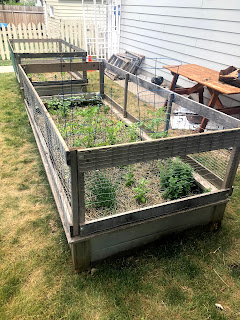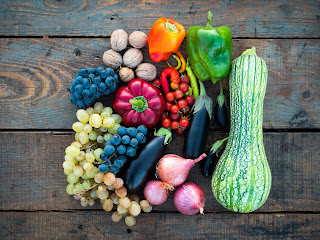The Creation of the Garden of the Office of Sustainable Efforts (GOOSE)
Planting a Pollination Companion Garden in the Backyard of Sustainability
By: Christine McCormick
On my first day arriving in the backyard of the sustainability office I found myself filled with two feelings. The first one being the overwhelming joy of being able to meet in person with my peers and favorite professor, and the second being the shock and dismay that came with seeing the perfectly well-manicured (potentially recently treated) lawn of sustainability! How could an office dedicated to achieving environmentally-friendly goals at Macalester have a yard that was so... well... archaic. I immediately knew what needed to be done and so did my fellow sustainability assistants. On the second official meeting of the summer, it was decided that a sustainability garden would be added to the summer’s list of goals.
After doing some research, I presented the idea of a pollinator companion garden. What’s a companion garden, you may ask? It's an idea that has been practiced for many years where plants with mutual benefits are planted together. The most well-known companion garden combination is the three sisters: corn, beans, and squash. The corn creates a sturdy trellis for the beans to grow up, and the squash creates ground cover preventing invasive plants from growing below the beans and corn. Beans provide nitrogen to the soil and extra stabilization for the tall corn stalks. It’s like a match made in vegetable-growing heaven! While our garden does not contain the three sisters—alas, our beans will have to grow up a trellis—it does contain many plants that mutually benefit each other and attract pollinators!

Sally working on spreading topsoil
Since we were working with a pretty tight budget of $100 dollars, I turned to my favorite Facebook group Buy Nothing Mac-Groveland. I asked our neighbors if they had any spare materials to build beds or plants that didn’t end up in their garden and was met with incredible support and generosity. Not only did we get plenty of plants donated but we also were gifted fully built galvanized steel raised beds from a lovely resident of the neighborhood. After the strenuous task of moving the beds was complete, it was time to pick our plants. Sally (a fellow sustainability assistant) and I went to Eggplant Urban Farm Supply and received expert advice on the plants to put in the beds. The final plant list is beebalm, basil, eggplants, Persian cucumber, zinnias, cherry tomatoes, big beef tomatoes, tri-color beans, dino kale, oregano, and chives.
 |
| fully planted beds |
The herbs will attract pollinators as well as fend off potential pests (sorry bunnies, not today!) as well as aid in the flavor of other vegetables growing in the garden. For example, basil makes tomatoes taste even better when they are grown in the same soil. The beans will add nitrogen to the soil making it more fertile for other plants and the bee balm and other pollinating flowers will further attract bees and butterflies to the garden. Overall, this project was so fun to plan and I can’t wait to see what happens to it in years to come.


Comments
Post a Comment